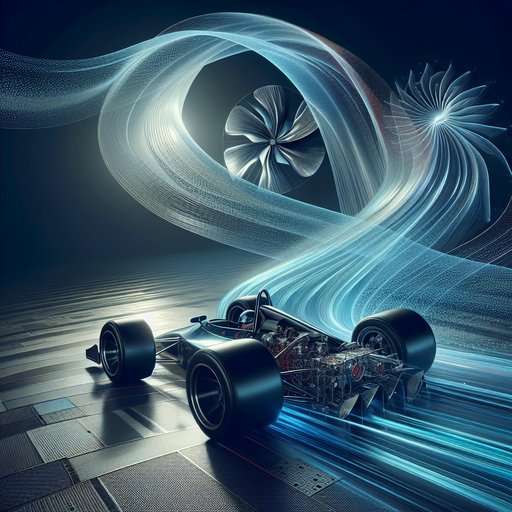
Few forces have reshaped Formula 1 as profoundly as computational fluid dynamics and wind tunnel science. In the late 1960s, teams bolted simple wings onto cigarlike cars and learned about downforce by eye and stopwatch. Today, entire performance concepts live and die on the fidelity of virtual airflow models and the correlation between simulation, tunnel data, and track reality. The journey from rudimentary appendages to fully integrated aerodynamic ecosystems explains not only the look of modern F1 cars, but also why aero execution can swing titles and define eras.
Aerodynamics sits at the intersection of speed, stability, and tire management, so the tools used to shape airflow inevitably influence the sport’s competitive evolution. Wind tunnels and CFD didn’t just refine designs; they transformed how teams think about cars, turning them into systems where wings, floors, and suspension interact as one. As power units and tires converged in performance through regulation, aero became the richest area for lap time—and the riskiest for missteps. Understanding how teams learned to predict, measure, and trust airflow explains why some projects soar while others stumble.
In the beginning, experimentation was raw and visceral. Teams in 1968 discovered that bolting wings onto cars like the Lotus 49 produced instant lap-time gains, only to learn the hard way—after dramatic failures in 1969—that structure and regulation must tame ambition. The 1970s ushered in ground effect with the Lotus 78/79, where Venturi-shaped sidepods and sliding skirts turned the floor into the primary downforce producer. Those breakthroughs emerged from simple tunnels, track testing, and intuition, but they also revealed a lasting truth: underbody flow is king when you can control it.
As stakes grew, so did tunnel sophistication. Rolling roads, moving belts, and boundary-layer control made scale-model testing more representative, and teams began to uncover how small geometry changes sparked big vortex structures under the chassis. Concepts like the raised nose, popularized by Tyrrell in 1990, showed how feeding cleaner air to the floor could outgun purely wing-led approaches. Modern Sporting Regulations cap tunnels at 60% scale and 50 m/s, but within those constraints, teams now chase exquisitely detailed flow fields across brake ducts, suspension shrouds, and floor edges.
CFD added the missing dimension—speed and breadth of exploration. Early solvers gave rough guidance; now RANS-based simulations, augmented by hybrid turbulence models, allow teams to analyze complex separation and vortex interactions before any carbon is cut. Because race cars live in transients—ride-heave, yaw, steering lock—CFD lets engineers sweep parameter spaces that would be impractical in tunnels alone. Crucially, the modern workflow is a loop: CFD proposes, the tunnel verifies, and track rakes, pressure taps, and flo-viz paint confirm what the driver actually feels.
When that loop correlates, development accelerates; when it breaks, entire seasons can go sideways. Rules and economics hardened this reliance while shaping its boundaries. Aerodynamic testing is tightly controlled, with limits on model scale, tunnel speed, and CFD usage, and since 2021 a sliding Aerodynamic Testing Restrictions system grants fewer runs to higher finishers to promote competitive balance. The cost cap forces smarter iteration rather than brute-force experimentation.
When the FIA and Formula 1 co-developed the 2022 ground-effect regulations, they leaned heavily on in-house CFD and validated 50%-scale models in Sauber’s Hinwil wind tunnel to shape a package that would reduce outwash and improve following. Teams then faced the real-world twist—porpoising—solved only by iterating rapidly through the CFD–tunnel–track loop and by subsequent regulatory tweaks for 2023 that adjusted floor and diffuser geometry. On track, the winners have often been those who mastered that loop. Red Bull’s 2010–2013 run grew from superb aerodynamic integration and control of exhaust-blown diffusers, a feat that demanded precise simulation of unsteady flows.
Ferrari’s well-documented wind tunnel correlation issues a decade ago forced the team to use Toyota’s Cologne facility while upgrading Maranello—an object lesson in how a great idea can be hamstrung by bad data. In the ground-effect era, Red Bull’s efficient floors and rear-end architecture have defined the benchmark, while resurgent teams have found step changes only after re-baselining their aero maps and improving correlation, as McLaren did in 2023 with a comprehensive floor and bodywork rethink. Championships, in other words, hinge as much on modeling fidelity and testing discipline as on novel geometry itself. The technical thrust is now subtler but no less demanding.
Where the pre-2022 era optimized front-wing outwash and dense bargeboard arrays, today’s cars seek stable, load-rich floors that resist ride-height changes and yaw without stalling. That drives innovation in suspension kinematics, stiffness tuning, and cooling packaging to protect the floor’s inflow. The best designs make the car predictable for the driver while preserving tire life—an aerodynamic problem as much as a mechanical one. Every update is a risk-reward decision constrained by CFD quotas, tunnel hours, and the need to land upgrades that work immediately within a tight cost envelope.
Looking ahead, the trend is convergence, not replacement. New tunnels are still coming online—alongside ever-larger compute clusters—because the most robust answers come from blending virtual and physical insight. The 2026 ruleset, with revised aero to complement new power units, will again be sketched in silicon and proven in the wind, and teams that harmonize the two quickly will seize early gains. From simple wings to living, breathing airflow ecosystems, Formula 1 has learned that speed begins where simulation, tunnel data, and track truth agree—and that is now the battleground where titles are won and lost.












